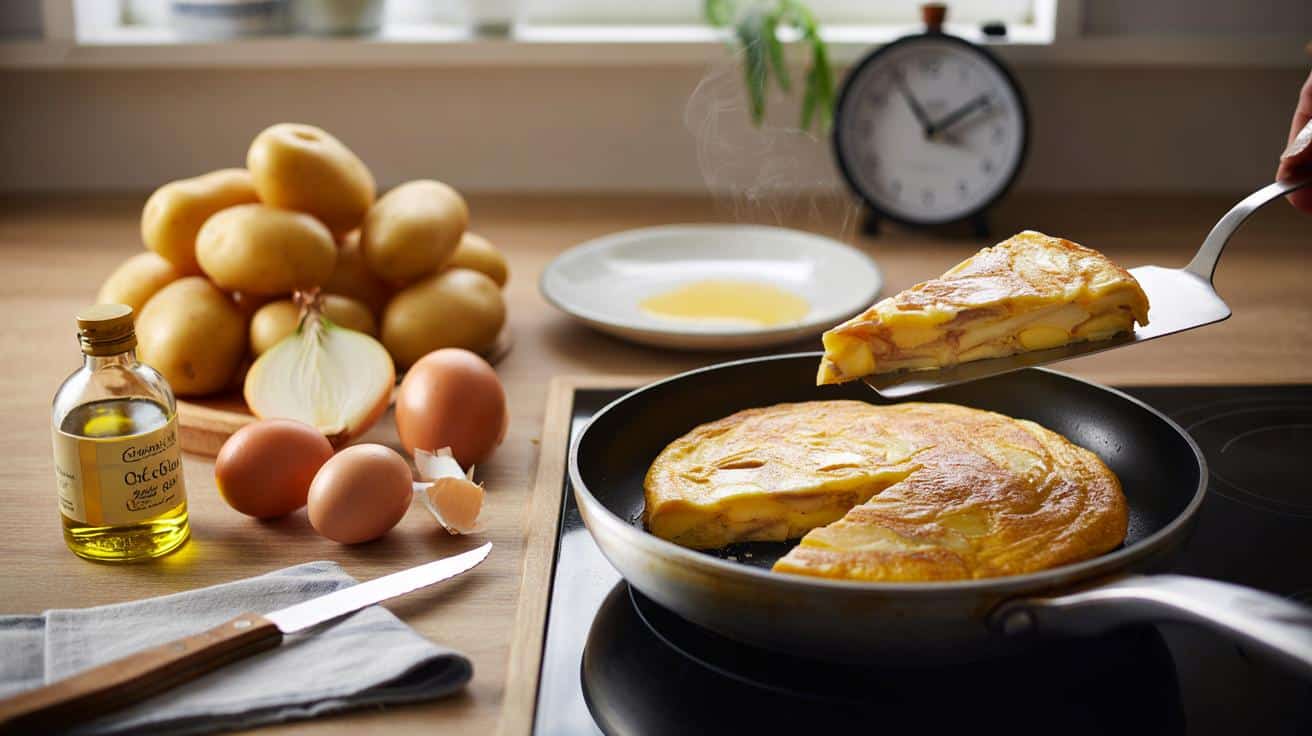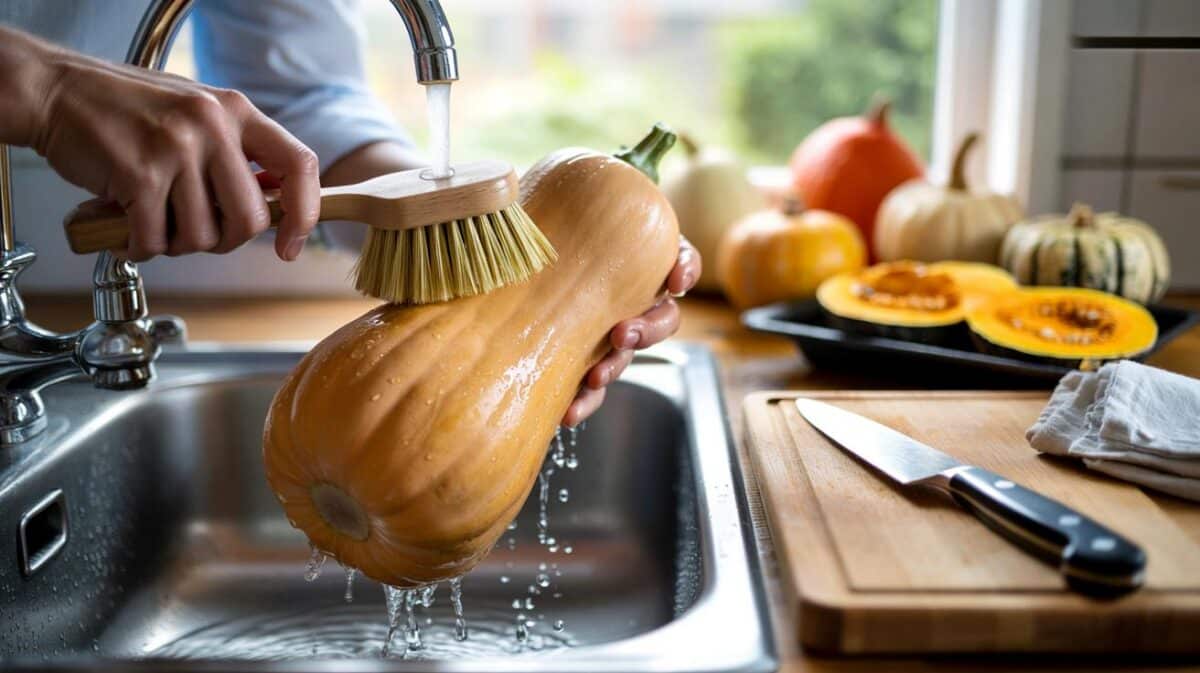Across Britain, a four‑ingredient Spanish tortilla is quietly becoming the go‑to reply to rising food bills and crammed evenings. It calls for familiar cupboard staples, one pan and modest heat, yet brings generous slices that satisfy without fuss.
Why a four‑ingredient classic fits 2025
Households want dinners that feel comforting, keep costs down and slot into tight schedules. A Spanish tortilla, thick and tender, meets that brief with potatoes, eggs, onion and olive oil. It uses items you likely have already, wastes very little, and scales easily for packed lunches or last‑minute guests.
The method rewards patience more than skill. Gentle heat softens onion, potatoes soak up fragrant oil, and beaten eggs cling to every edge. A quick flip sets the top, leaving a custardy middle that slices cleanly once rested.
Four items, one pan, about 20 minutes: a warm meal that feeds four to six for roughly £3–£3.50.
What you need
- 500 g cooked potatoes, waxy or all‑rounder (Charlotte, Maris Piper)
- 6 medium eggs
- 1 large yellow onion
- 4 tbsp extra‑virgin olive oil
- Sea salt and black pepper
Typical cost per batch
| Item | Quantity | Guide price | Notes |
|---|---|---|---|
| Eggs | 6 | £1.60–£2.10 | Medium, supermarket own‑label |
| Potatoes | 500 g cooked | £0.40–£0.70 | From a 2.5 kg bag |
| Onion | 1 large | £0.18–£0.30 | Loose, yellow |
| Olive oil | 4 tbsp (~60 ml) | £0.30–£0.45 | Based on £5–£7 per litre |
| Approximate total | £3.00–£3.55 | Serves 4–6, 50–85p per portion |
How to get that plush, tender set
Slice the onion finely. Warm 2 tbsp olive oil in a wide non‑stick frying pan over medium heat and cook the onion until soft and lightly golden. Cut the cooked potatoes into thick rounds or chunky cubes. Add them with the remaining oil and turn gently so they colour without breaking apart. Lower the heat if they start to catch.
Beat the eggs in a large bowl until smooth. Season well. Tip the warm potatoes and onion into the eggs and fold carefully to coat every piece. Rest the mixture for a minute so the egg clings.
Return the pan to medium‑low heat with a slick of oil. Pour in the mixture and spread it evenly. Let it cook until the edges set and the centre still quivers, about 3–4 minutes. Loosen the sides with a spatula. Place a flat plate over the pan, grip firmly, and invert. Slide the tortilla back into the pan to cook the second side for 2–3 minutes until the surface turns a deep golden and the middle feels softly springy.
Keep the heat low; let steam, not flames, do the setting. Flip once with a plate and breathe.
Safer flipping, cleaner slices
- Use a plate wider than the pan so nothing spills at the edges.
- If the base sticks, add a teaspoon of oil around the rim and wait 30 seconds before trying again.
- Rest under a clean tea towel for 5–10 minutes; the steam settles the centre and slices hold.
- Serve warm or at room temperature. A serrated knife gives neater wedges.
Tweaks from the fridge, not the specialist aisle
The base welcomes small extras without losing its character. Keep add‑ins modest so the egg can bind the lot.
- Roasted red pepper, diced small, for sweetness and colour.
- A handful of peas for a gentle bite.
- Chorizo in tiny cubes for smoky heat.
- Flat‑leaf parsley, chopped, stirred in at the end.
- Cheese shavings (manchego or a firm sheep’s cheese) on top before flipping.
- 1 tbsp crème fraîche whisked into the eggs for extra silkiness.
A practical ratio: for every 6 eggs and 500 g potatoes, limit extras to 100–150 g in total. Larger loads need an extra egg and a slightly longer cook on a gentler flame.
Serving, storage and food safety
Pair with a salad of young leaves dressed with sherry vinegar and olive oil. Add toasted nuts for crunch. Leftovers sit well in a crusty roll with a smear of aioli or mustard. Cubes make easy tapas for a Friday night spread.
Wrap and refrigerate for up to three days. Eat cold or rewarm gently in a lightly oiled pan over low heat until hot through. Aim for steaming hot in the centre; avoid hard, dry edges by keeping the flame modest. Many avoid freezing because the texture turns mealy, but small wedges freeze better than whole rounds if wrapped tightly and thawed overnight in the fridge.
Energy, nutrition and swaps
One pan and a lid keep energy use lean. A lidded pan traps heat so the centre sets sooner. Induction or the smallest gas ring that fits your pan saves fuel. If olive oil runs low, use a neutral oil for frying and finish with a spoon of olive oil over the cut surface for flavour.
For a dairy‑free, vegetarian plate that still satisfies, this checks both boxes. Gluten isn’t present. Add salad and a handful of beans on the side for more protein. If you need to reduce fat, cut the oil by a tablespoon and use a solid non‑stick pan; the result stays tender if you lower the heat and give it a minute more.
Why households keep returning to it
Kids tend to eat it without a fuss. Adults can spice their slices separately. It packs well for work, and it cushions a tight week because it uses mainstream ingredients and tolerates swaps. A batch feeds four generously, six with a salad, at roughly 50–85p per portion depending on where you shop.
For meal planning, cook extra potatoes at the weekend. With eggs and an onion on standby, you can bring a tortilla to the table in about 20 minutes on a Tuesday, then serve the rest cold on Thursday in lunchboxes. That rhythm trims waste, smooths busy nights and keeps the food bill predictable without feeling sparse.








